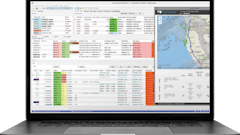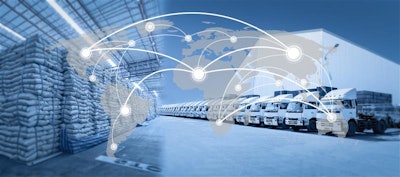
Sitting at the intersection of telecommunications and informatics, telematics provides essential insights for logistics professionals, especially those involved in managing vehicle fleets. The combination of critical communication and computing technologies, including GPS, cellular networks, Internet of Things (IoT), cloud computing and analytics software have progressively enabled new capabilities for tracking vehicles and containers. Telematics software allows dispatchers to gain critical insights so that they can make strategic decisions, solve issues and boost efficiency of their fleets.
To maintain a complete picture and manage deliveries with precision and efficiency, fleet managers need to quickly integrate data from multiple sources. Data continuously streams into cloud-based analytics systems from sensor hubs onboard vehicles. This data includes engine and cargo telemetry, location, speed, acceleration, in-vehicle video camera feeds and more. This data is analyzed in the context of driver history, weather and road conditions, workflow scheduling and other key information. It’s critical for managers to be able to combine all of this quickly and effectively.
The oncoming widespread deployment of 5G and other communications technologies will create both new opportunities and new challenges for telematics systems. The fifth generation of cellular networks will enable telemetry to be sent faster, allowing vehicles to transmit messages once per second instead of once per minute.
With greater bandwidth, lower latency and improved reliability, nationwide networks will communicate more messages than ever before. However, this torrent of incoming telemetry will require faster, more scalable analytics within telematics systems to take full advantage of this rich source of information.
For example, suppose you look at current vehicle message bandwidth and multiply that by the size of UPS’ fleet of 125,000 vehicles. This involves millions of data points delivered to a telematics system every minute. With 5G networks, this data will arrive 60 times faster, requiring new techniques for managing and analyzing it in real-time to minimize bottlenecks, identify issues and extract the greatest ongoing telematics value.
To help meet these challenges, a powerful new software technique for streaming analytics called “real-time digital twins” has been developed. It enables telematics systems to process incoming telemetry as it arrives rather than through delayed batched analysis. This technique creates a software-based twin of each physical data source being tracked and analyzes incoming messages from that specific data source. Data sources include vehicles, cargo containers and even drivers. Each digital twin hosts key contextual information about its corresponding data source, such as an engine’s maintenance history or a driver’s recent duty hours that help analyze incoming messages and dynamically update its knowledge of the data source.
Real-time digital twins offer two key advantages over conventional techniques for tracking telematics data.
First, their ability to immediately analyze telemetry with rich, dynamically evolving context enables them to continuously “learn,” predict and alert managers about emerging issues. For example, they can implement predictive analytics for engine telemetry, and can alert to potentially unsafe driving due to fatigue or other factors.
Second, they can dynamically sift through telemetry and create key statistics for immediate aggregation, enabling better overall situational awareness than previously possible. For example, they can identify widespread delays due to weather or highway congestion as they are occurring so that dispatchers can react strategically.
Benefits of this, real-time digital twins approach include:
· Real-time analytics results. Dispatchers shouldn’t have to wait to query databases to make key decisions. With up-to-the-minute information from real-time digital twins, logistics professionals can make the most informed decisions about quickly developing situations.
· Better situational awareness. Because real-time digital twins immediately analyze incoming data and then aggregate the results within seconds, dispatchers can maintain a better picture of dynamically evolving issues, enabling fast, strategic responses. Since offline batch analytics can take minutes or hours to complete, it can’t track complex problems and create alerts in real time.
· Natural groupings of relevant data for analysis. Real-time digital twins naturally associate data about their corresponding data sources and create an intuitive way to analyze telemetry. For example, the real-time digital twin for an engine will draw upon databases to obtain that engine’s maintenance records and history of recent issues, which it can combine with incoming telemetry about current operating parameters.
· Ability to send information back to the source. Today, many real-time alerts are only signaled at the edge within the vehicle, such as lane violation or erratic driving alerts. But, real-time digital twins can use fast 5G networks to send instant control signals back to a vehicle for timely feedback. For example, they can analyze multiple engine sensor readings with machine learning techniques to detect an impending failure that needs to be immediately communicated to the driver.
· Easily integrated into telematics systems. Today’s telematics systems typically snapshot incoming telemetry, save it in a database for query and process it offline using big data techniques. Real-time digital twins can run alongside these components, analyzing incoming telemetry as it arrives and creating immediate results for visualization.
· Simplified, fast development. Application code running in real-time digital twins only needs to focus on a single data source instead of analyzing the flow of all incoming messages. This simplifies design and enables more detailed feedback and insights for each data source.
· Transparent scaling. Real-time digital twins are designed to run within scalable, in-memory computing systems hosted either on-premises or in public clouds. They can easily and transparently scale their message-processing bandwidth to handle expanding fleets simply by adding more digital twins and computing resources to process them.
With this exciting new technology, dispatchers and logistics managers will be able to extract insights from thousands of data sources in real-time and aggregate them to maximize situational awareness. This will enable vehicle fleets to operate at much higher levels of safety, productivity, and efficiency. Telematics is the key to taming the demands today's complex logistics networks and real-time digital twins will undoubtedly play an important role in helping telematics accomplish this task.

![Pros To Know 2026 [color]](https://img.sdcexec.com/mindful/acbm/workspaces/default/uploads/2025/08/prostoknow-2026-color.mduFvhpgMk.png?auto=format%2Ccompress&bg=fff&fill-color=fff&fit=fill&h=100&q=70&w=100)

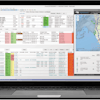
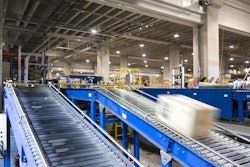
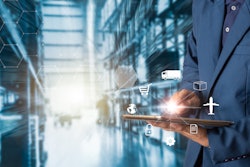
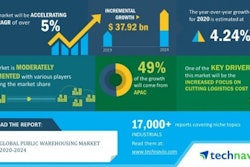
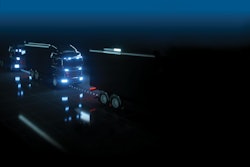

![Pros To Know 2026 [color]](https://img.sdcexec.com/mindful/acbm/workspaces/default/uploads/2025/08/prostoknow-2026-color.mduFvhpgMk.png?ar=16%3A9&auto=format%2Ccompress&bg=fff&fill-color=fff&fit=fill&h=135&q=70&w=240)

